A Group Exhibition at Clint Roenisch Gallery in Toronto
by Emese Krunák-Hajagos
I was looking for exhibitions to visit when one of the artworks on the Clint Roenisch website caught my eye. At the gallery, Roenisch told me that the exhibition actually started with that image. He had seen it in an auction in New York. It was a photographic work by Willard van Dyke, a famous photographer and documentary filmmaker. He was also the director of the film department at MOMA between 1965 and 1974, where he started two programs for showing the art of avant-garde and documentary filmmakers. The influence of avant-garde is unmistakable in the composition of Performance by the Hanya Holm School of Dance. In addition to being figurative, as both Hanya and the group of dancers are actually photographed and the image was not manipulated in any way – the picture is surrealistic. The shallow indentation of the building makes it a kind of a stage set. The shadow of the building precisely points to Hanya and continues in her own shadow on the ground. She stays there in the bright light in a dance pose as a priestess might in front her acolytes, the group of dancers kneeling and bending their heads. Hanya Holm, a German-American dancer, was also a choreographer and dance educator, and one of the “Big Four” founders of American modern dance. Her technique emphasized the freedom and flowing quality of the torso and back but also involved the emotions of the dancers that led to improvised, rather than choreographed, performances. I expected this to be a very large-scale photograph, so I was really surprised seeing that it was a tiny, 6 x 8.75-inch print – yet so monumental and surprising with its layered composition. It is a mesmerizing piece.
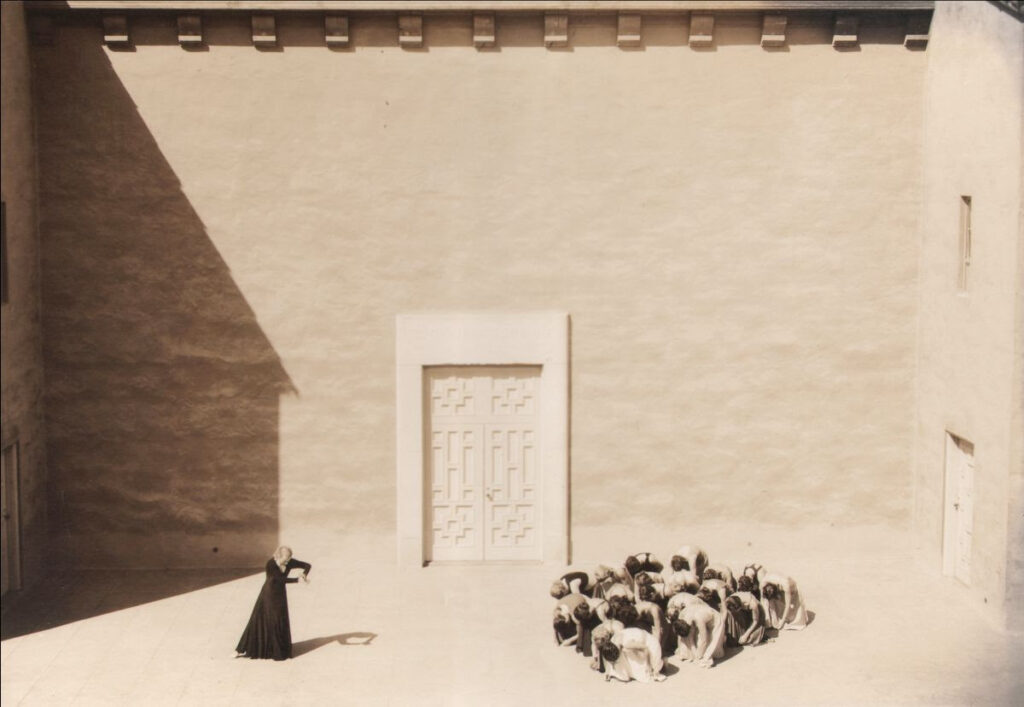
Night at St. Anne’s by Heather Goodchild, depicts the Byzantine revival Anglican church on Gladstone Ave in Toronto, five buildings away from the artist’s house. She looks at it as a portal to another realm. She was thinking about her father, who had recently died and was a Scorpio – so she combined the image of the church and the sign of Scorpio in honor of his memory.
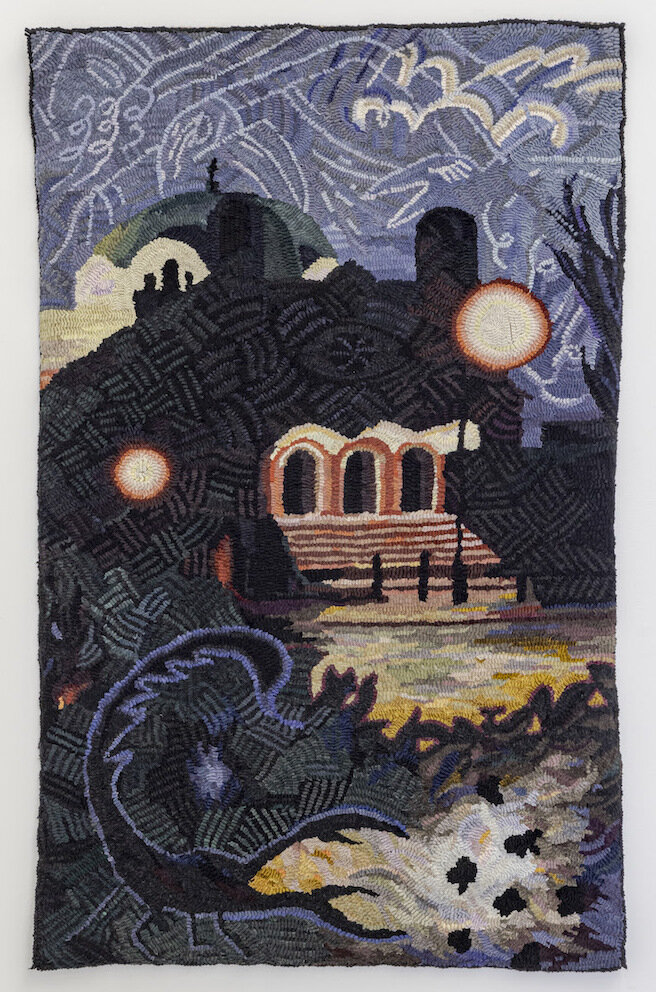
Anna Torma was watching her grandmother working on embroidery and that inspired her to become a textile artist. She comes from a Hungarian background and draws from folklore and children’s stories. Green Saga (2021) is a recollection of childhood tales. As Torma pointed out in conversation about her solo exhibition, Permanent Danger at the Textile Museum of Canada (2020), these stories have a real influence on a human being and it is also important to tell your story with your own method, in your own tune. Her tune is the textile arts. Many motifs in Green Saga go back to bedtime stories, from nice fairytales to Prince Árgyélus, a favourite Hungarian character, as well as to a good king who lets a bird use his crown as a nest but also scarry ghosts, creatures wearing more than one animal features with sharp teeth – not a happy company.
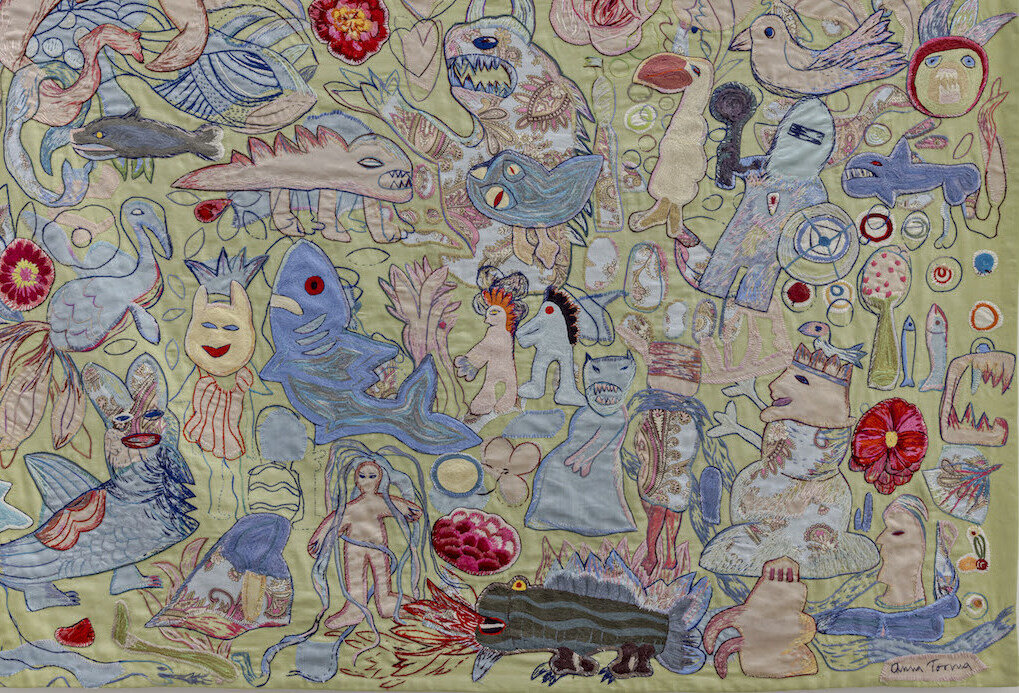
Torma collects pieces of textile from the past as representations of history and includes them in her embroidered works. As an immigrant, she went through difficult times and lived in many places. The series Abandoned Details reflects her diasporic experience and fragments of memories from the past she had to leave behind. All the motifs in her compositions are represented equally as the outcome of a very intuitive process.
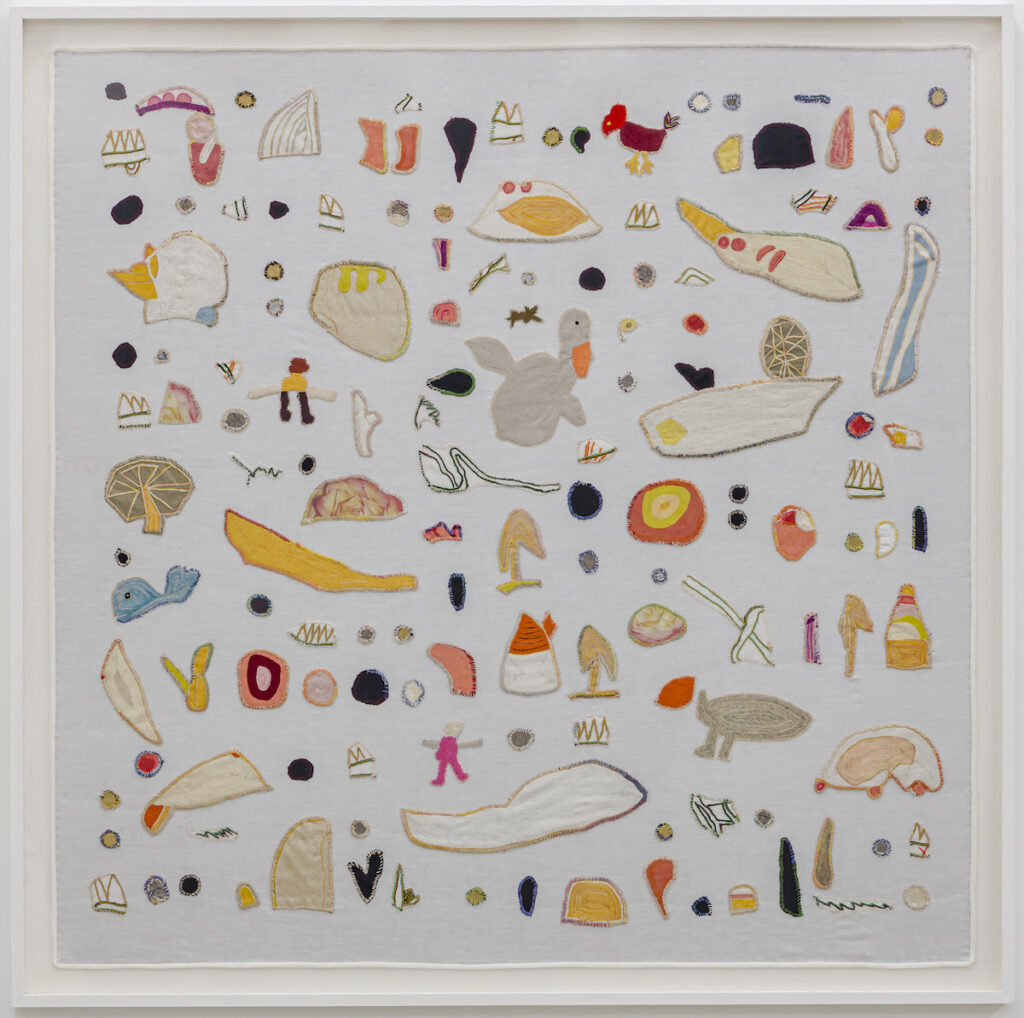
Two paintings on silk by British artist Emma Talbot, address ecological mourning, the destabilization and instability of our time, in which social systems are breaking down. Talbot quotes Arundhati Roy who describes capitalism as a train wreck and we have to decide to fix it or “look for a better engine”. As Talbot states, “It’s the idea of a portal to a different, more caring, responsible future that seems visionary to me.” She envisions a new, female empowered culture. Faceless female characters occupy her work. They are simultaneously abstract and figurative; body parts sometimes disconnected from their bodies to resurface over ornamental elements.
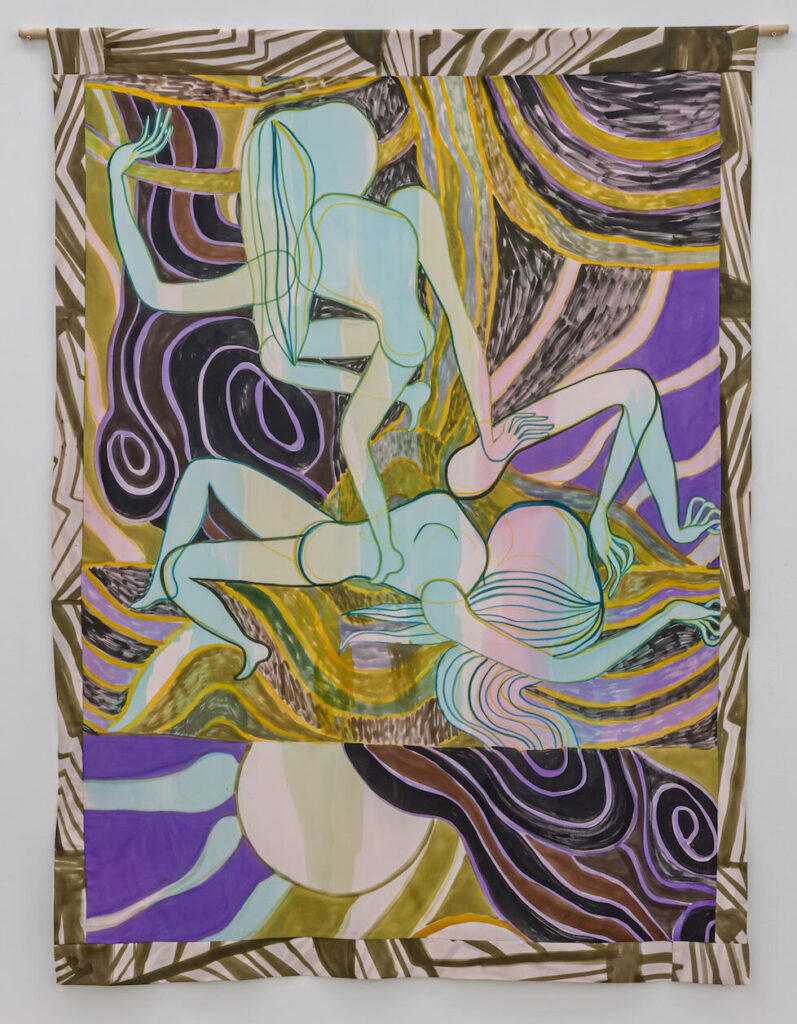
Brussels-based painter/artist Sarah Cale also addresses the female figure but in a different way. Her works are very eye-catching. They are a mixture of sculptural and painterly motifs. In Buffer, the string hanging in a 3D space could easily be just a paint flow. In Inversion the hands are emphasized with oil paint while jute flows freely representing the hair. There is a sense of humour in these pieces in the way the figures are built up, especially in Buffer where the breasts are empty and remind me of ruined pantyhose juxtaposed against the covered hands. Movement plays a role as well, as the woman holds her hand in a gesture of rejection in Buffer or bends in Inversion. There is a collage aspect in Cale’s work and here the way the jute behaves is dictating the way the figure turns out.
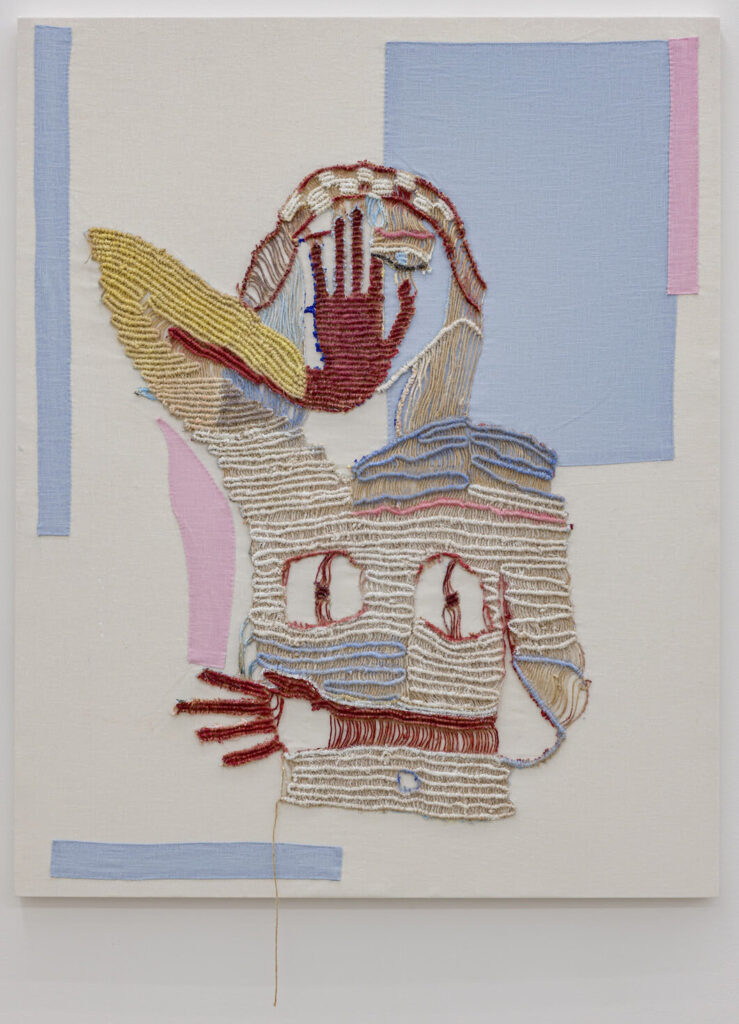
Abdul Sharif Baruwa created seven new paintings for this exhibition. He is a London born artist who lives in Vienna but often spends summers in the Alps tending cows as he did when he was a child. The series record an afternoon spent in a forest outside of Salzburg, but it could be anywhere in Canada. The artist just stapled the pieces to the wall so it is some kind of footage. These pastel drawings are very ephemeral; what is left out of the composition is just as important as the elements actually depicted. For example, in Swimmer the body of the man is hardly visible, the human body and the element of water presented equally. The postures of the figures and the surrounding landscapes are very peaceful and meditative – creating a harmony between man and nature, a rare occurrence in our turbulent times.
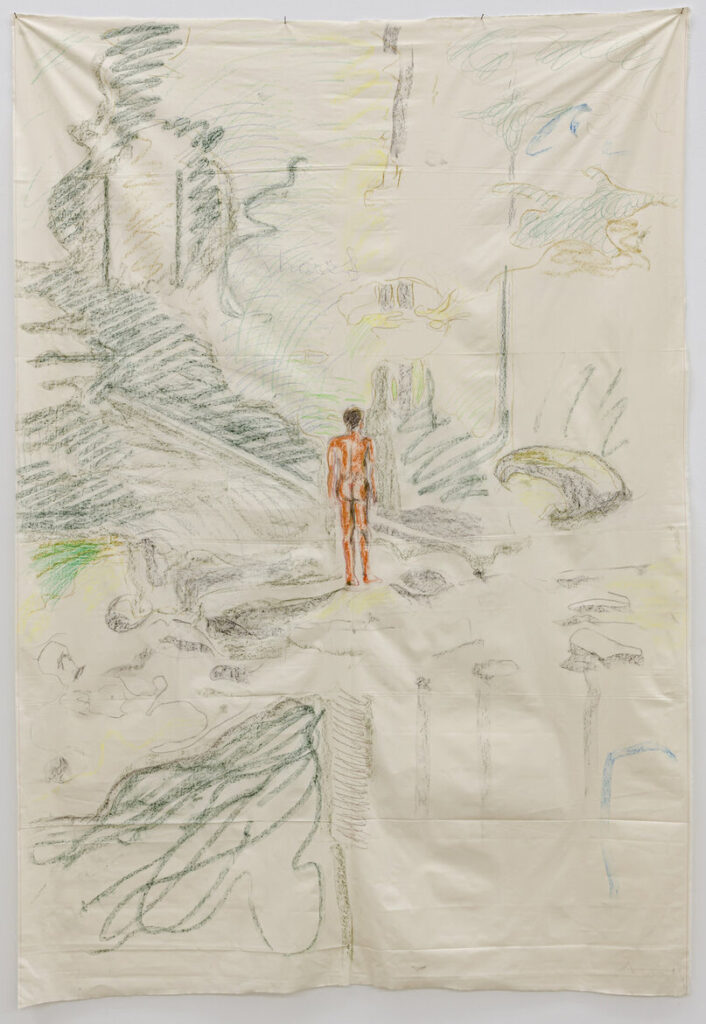
The glass bottles in the middle of the room are by Lorna Bauer from Montreal. She had a residency in Rio de Janeiro (2017-18). She was really struck by the amount of plastic water bottles littering the streets or scattered on the beaches. But she was also inspired, slightly more positively, by the way people were growing orchids in them or using them to provide water for stray cats. She took the plastic water bottles as a motif to make these mold-blown glass vessels. She was hoping that they might reflect the shape of the lung that give them existence. Bauer wrote, “The blowing lung that created the vessels themselves is meant to be a visual analogue for the bottles as life form and form of life.” She incorporated stoppers inserted into them loosely based on the botanical illustrations of Margaret Mee.
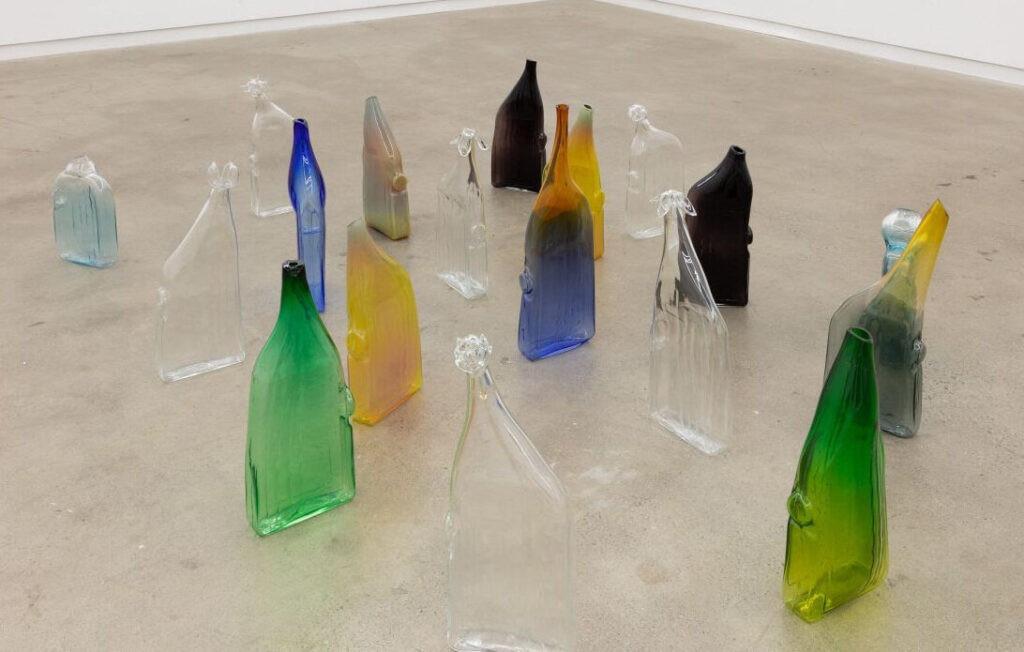
A Month of Single Frames by Lynne Sachs is a 14 min coloured film made with and for Barbara Hammer (2019). In 1998, filmmaker Barbara Hammer had a one-month artist residency in the C Scape Duneshack in Cape Cod, Massachusetts. The shack had no running water or electricity. In her solitude, as she says in the film, she tried in the dark shadow of the shack to project coloured lights on the dunes. She wanted to try a steady image on the sand dunes. Try a moving image, the sea. In 2018, Hammer began her own process of dying by revisiting her personal archive and she gave all of her Duneshack material to filmmaker Lynne Sachs who edited it into this film, on display now at Clint Roenisch.
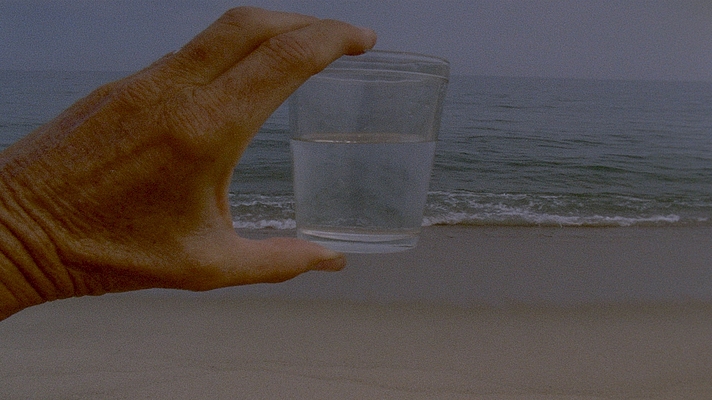
A Temple Most August brings together international and Canadian artists presenting their ideas in various medias. However eclectic the artwork, they all address similar issues regarding the social and emotional conditions of our human race, whether distressing or harmonious. The artists tell stories about ecological or social disfunctions and their dreams about a better, more caring future. They share their joy of nature and the peace of meditation. I highly recommend a visit to this Temple.
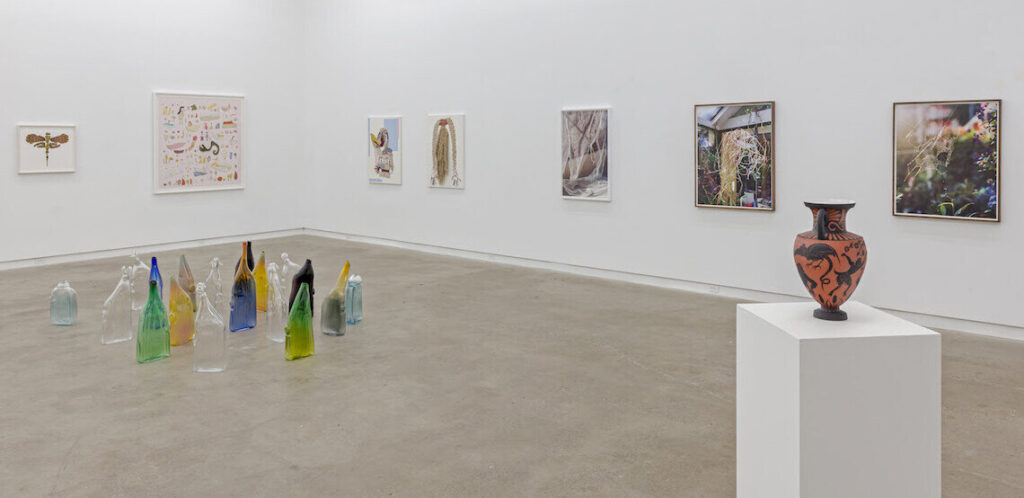
*Exhibition information: A Temple Most August / Group Exhibition showing artwork by Abdul Sharif Baruwa, Anna Torma, Emma Talbot, Heather Goodchild, Jennifer Murphy, Lorna Bauer, Lynne Sachs, Sarah Cale and Willard van Dyke, June 12 – September 11, 2021, Clint Roenisch Gallery, 190 Saint Helens Ave, Toronto. Images are courtesy of Clint Roenisch Gallery.
